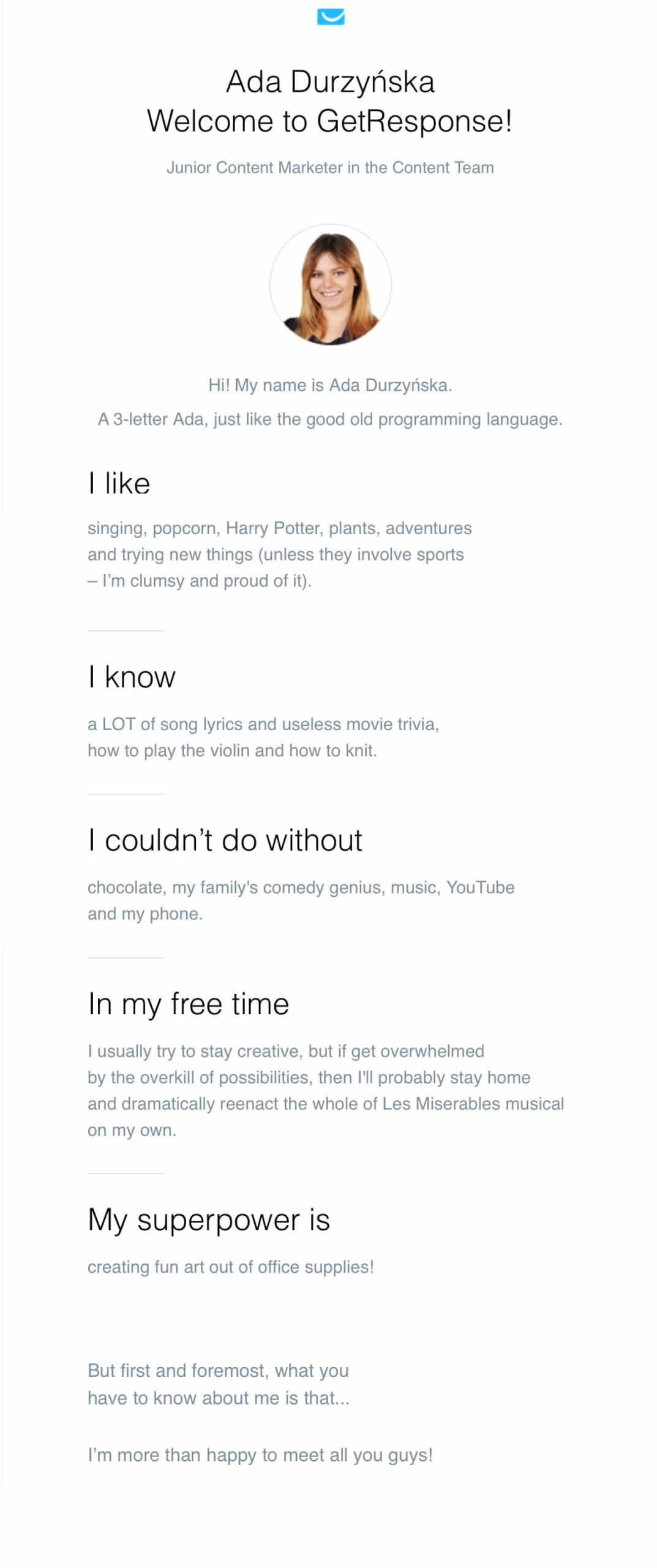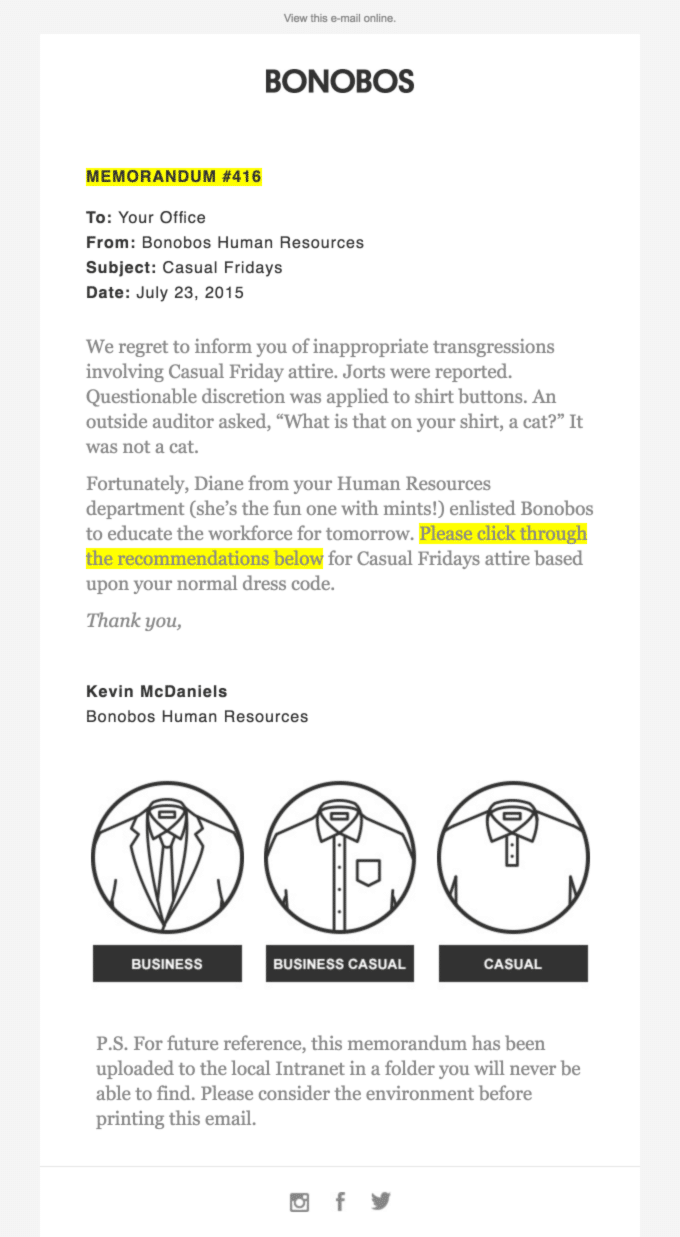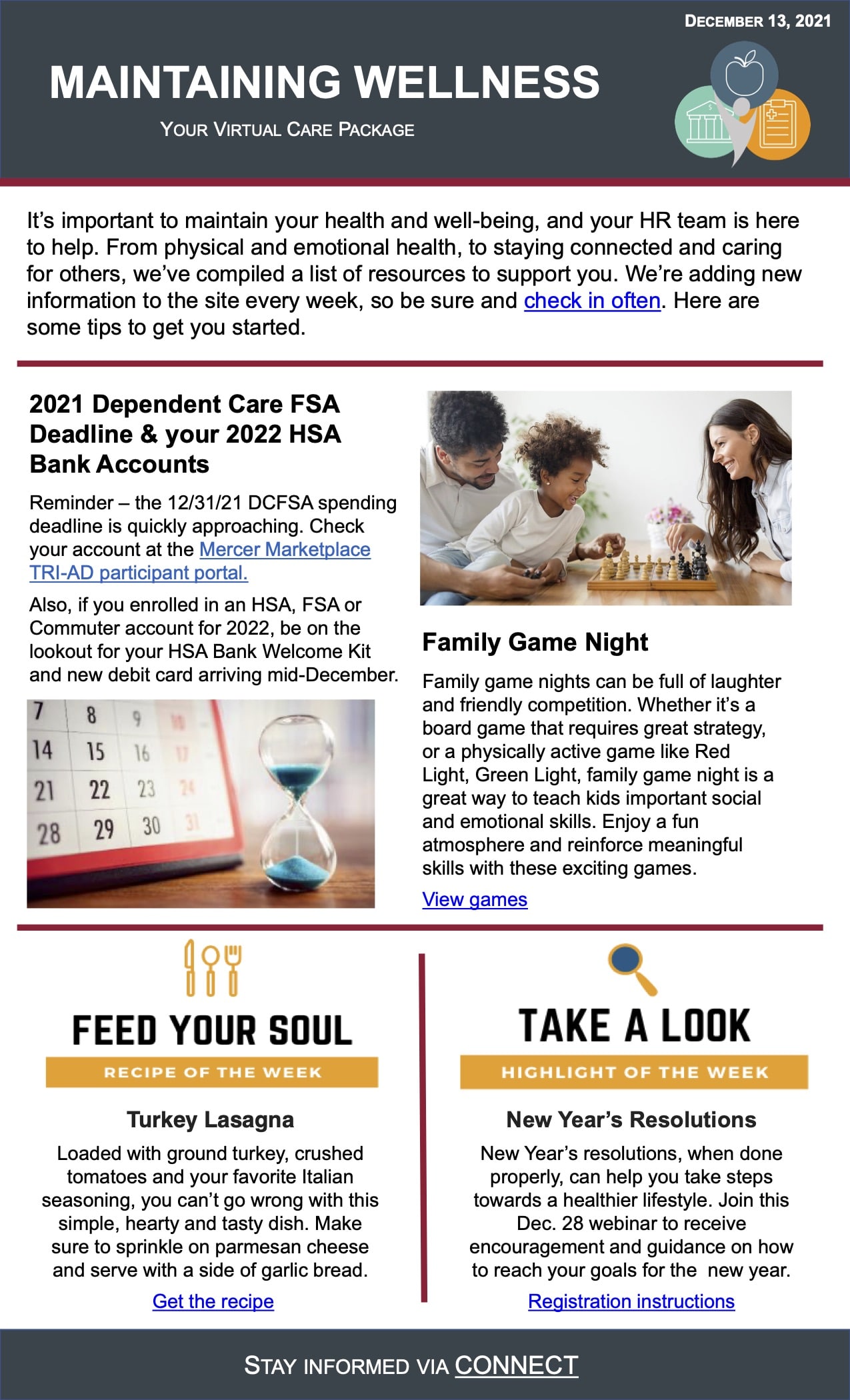Employee loyalty isn’t something you automatically get. If the record-breaking resignation numbers in recent years have shown us anything, it’s that you have to continue to earn your employees’ engagement and loyalty. However, internal communications can often come as an uncreative afterthought in organizations, which is made glaringly apparent by the 34% of company newsletters that go unopened.
Let’s be real; we’ve all received those jargony, high-level corporate newsletters with massive blocks of copy we’re never going to read. However, done right, internal newsletters have the power to inspire, cultivate company culture, and keep teams aligned. Internal company newsletters are a powerful tool and should be approached with the same effort and intentionality that you put into any email marketing.
1. Start with what’s most important to your employees
We might break some hearts here, but your internal newsletter is not first and foremost about how awesome your leadership team is. Internal newsletters should focus on creating something valuable, digestible, and engaging for your employees. This doesn’t mean you can’t include high-level company goals or updates; it’s good to keep your teams informed. However, it does require positioning your newsletter content in a way that employees can see how it relates to their role.

This example from Staffbase shows a newsletter content structure that highlights what is most immediately valuable to employees first, before moving into company news. Source.
Give context to growth and goals
Employees will be more motivated and engaged when you share growth and goals in the context of each team member’s contribution. Don’t just throw quarterly numbers at them in a newsletter and expect them to understand their individual impact on initiatives. Connect the dots for them. Organizational goals hold little impact until they become personal.
For example, when sharing quarterly stats, phrase it in a way that highlights their contribution. “Here is where our company OKRs are, which means each individual is performing at XY% of capacity. This is [good/bad/indifferent] because of XYZ. This is our opportunity moving forward, and this is how you can help us achieve that.”
Put a spotlight on your employees
It’s a psychologically proven principle that people love talking about themselves. According to Psychology Today, it’s so gratifying for people it engages the same areas of the brain as other pleasurable activities, like eating good food and even having sex. In short, it’s powerful. If you want to increase employee engagement, celebrate them, talk about them, let them share about themselves.
You can put a spotlight on your employees by celebrating success stories, featuring positive client feedback, sharing promotions, and introducing new hires.

This example from GetResponse highlights a new employee by letting them share about themselves with their new team. Source.
Include diverse perspectives
Help your employees feel a part of the team by including cultural role models with diverse backgrounds and identities. Ask employees to contribute to the newsletter content and share their voice; don’t make things just from the executive team.
Invite employees to share their tips for a successful workday, big wins of the week, praise for their teammates, or a tour of their home office. If a cultural holiday is happening, invite a team member from that affinity group to share about it. Enable your employees to see themselves in the people representing your company.
Create employee feedback loops
When in doubt, ask. Let the people tell you what they want by providing opportunities for feedback. They probably have the best newsletter ideas out of anyone since they’re the ones reading it. Provide feedback opportunities through whatever communication channel your company uses most regularly to gain the most input. It may include a link at the bottom of newsletters or a poll in Slack; the point is to meet people where they are.

Using an app integration like Simple Poll in Slack can be an effective way to gain feedback from teams.
Not sure where to start with your feedback loops? Check out our guide on how to effectively ask for feedback in an email.
2. Watch your tone
Employees get an endless amount of stiff, boring corporate emails in a day, don’t make the internal newsletter another one. This is your opportunity to brighten their day and create something fun they’ll look forward to.
According to Invesp, 47% of email recipients “ read email based on subject line alone.” Make sure yours is one they want to open! Keep it short, pique their interest with a counter-narrative or a phrase that creates a sense of urgency (what the cool kids call FOMO). If you really want to grab your reader’s attention, use dynamic content tags to personalize the subject line, which has been found to increase open rates by 22%!
In your body copy, use a casual and personable tone. Include punchy headlines and title sections that make people want to read more, or insert a relatable gif to help people connect to your content.

This humorous take on an internal memo from clothing brand Bonobos makes the reader do a double-take. What initially appears as an HR reprimand is actually a clever marketing email, which is made apparent in the comical copy. Source.
3. Provide engagement opportunities
The easiest way to make your employees actually read your internal newsletter is to make them part of the conversation. No one enjoys a one-sided conversation. When you engage your employees, you’ll see open rates increase, company culture improve, communication become more effective, productivity rise, and employee brand amplification thrive.
So, how do you make this happen? Include interactive elements like polls, contests, and sharable content in your employee newsletter. This might look like links to company social media posts, workplace bingo, or a poll to see what to order for the next team lunch. The key is to motivate employees to engage by eliciting an emotive response; make it fun, exciting, inspiring, empowering, or rewarding.

Newsletters from Would You Rather are interactive and create something for readers to come back for — the results from the last poll. While it may not be an internal newsletter, the same concept can be applied. Source.
4. Share resources
A great internal newsletter should be an investment in your team. Create real value for your readers by providing professional development and personal support resources.
The resources should help employees hone skills, see a clear growth path at your company, and take care of themselves personally so they can show up better professionally. This could include highlighting fringe benefits, relevant industry news, upcoming company events and training, or internal job openings. Giving employees something to take away with them creates long-lasting value they’ll come back for.

This internal newsletter from Robert Half shares resources for employees’ physical, mental, and relational well-being. They do this by highlighting fringe benefits, company events, and outside resources. Source.
Pull it all together in an eye-catching design
So now that you have all of the elements in place to build an impactful internal newsletter, it’s time to wrap it up in a beautiful design before delivery. Enough with the boring corporate emails; it’s time to up your game. That probably sounds easier said than done, but you don’t have to be a professional designer or spend endless hours to create an eye-catching newsletter design. With our free newsletter templates, all you have to do is drag and drop.
Still not sure where to start building your internal newsletter? Check out how we create and send our monthly email newsletter here at Campaign Monitor.
